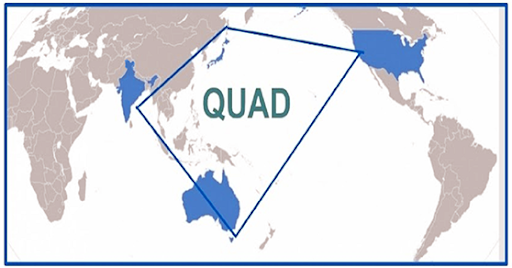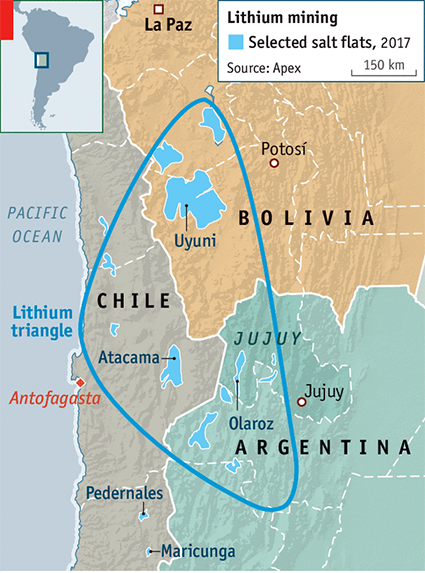International Relations
Upcoming Quad Meeting
Why in News
Recently, the US announced that the first in-person meeting of the Quad countries is going to be held in New York, US. The heads of all the four countries (India, Japan, Australia, and the US) are going to attend the meeting.
- Reacting to the upcoming summit, China criticized the Quad and said the formation of "exclusive cliques (circles)" targeting other countries runs counter to the trend of the times and is "doomed to fail".
Key Points
- Formation of the Quad:
- Following the Indian Ocean Tsunami (2004), India, Japan, Australia, and the US created an informal alliance to collaborate on disaster relief efforts.
- In 2007, then PM of Japan, Shinzo Abe, formalised the alliance, as the Quadrilateral Security Dialogue or the Quad.
- The Quad was supposed to establish an Asian Arc of Democracy but was hampered by a lack of cohesion amongst its members and accusations that the group was nothing more than an anti-China bloc.
- In 2017, faced again with the rising threat of China, the four countries revived the Quad, broadening its objectives and creating a mechanism that aimed to slowly establish a rules-based international order.
- In 2020, the trilateral India-US-Japan Malabar naval exercises expanded to include Australia, marking the first official grouping of the Quad since its resurgence in 2017.
- Further, it was the first joint military exercises among the four countries in over a decade.
- In March 2021, the Quad leaders met virtually and later released a joint statement titled ‘The Spirit of the Quad,’ which outlined the group’s approach and objectives.
- Objectives of the Quad:
- According to the ‘Spirit of the Quad’, the group’s primary objectives include maritime security, combating the Covid-19 crisis, especially vis-à-vis vaccine diplomacy, addressing the risks of climate change, creating an ecosystem for investment in the region and boosting technological innovation.
- However, despite the Quad’s seeming commitment to a broad range of issues, its main focus area is still considered to be countering China.
- Quad members have also indicated a willingness to expand the partnership through a so-called Quad Plus that would include South Korea, New Zealand, and Vietnam amongst others.
- Quad and its Linkage with China:
- Each of the Quad members are threatened by China’s actions in the South China Sea and its attempts to extend its sphere of influence through initiatives such as the One Belt One Road Project.
- The US has long been concerned about the global competition with China and have maintained that China aims to subvert the international rules-based order.
- Japan and Australia are likewise both concerned about China’s expanding presence in the South and East China Seas.
- India has its own long pending border issues with China.
- On the other hand, China sees the existence of the Quad as part of a larger strategy to encircle China and has pressured countries like Bangladesh to avoid cooperating with the group.
- The Chinese foreign ministry accused the group of openly inciting discord among regional powers in Asia.
- Each of the Quad members are threatened by China’s actions in the South China Sea and its attempts to extend its sphere of influence through initiatives such as the One Belt One Road Project.
- Issues Related to Quad:
- Undefined Vision: Despite the potential for cooperation, the Quad remains a mechanism without a defined strategic mission.
- The Quad is not structured like a typical multilateral organisation and lacks a secretariat and any permanent decision-making body.
- Additionally, unlike NATO, the Quad does not include provisions for collective defence, instead choosing to conduct joint military exercises as a show of unity and diplomatic cohesion.
- Maritime Grouping: The entire focus on the Indo-Pacific makes the Quad a maritime, rather than a land-based grouping, raising questions whether the cooperation extends to the Asia-Pacific and Eurasian regions.
- India’s Aversion of Alliance System: The fact that India is the only member that is averse to a treaty alliance system, has slowed down the progress of building a stronger Quadrilateral engagement.
- Undefined Vision: Despite the potential for cooperation, the Quad remains a mechanism without a defined strategic mission.
Way Forward
- Need For Clear Vision: The Quad nations need to better explain the Indo-Pacific Vision in an overarching framework with the objective of advancing everyone’s economic and security interests.
- This will reassure the littoral States that the Quad will be a factor for regional benefit, and a far cry from Chinese allegations that it is some sort of a military alliance.
- The forthcoming Ministerial meetings can be an opportunity to define the idea and chart a future path.
- Expanding Quad: India has many other partners in the Indo-Pacific, therefore India should pitch for countries like Indonesia, Singapore to be invited to join in the future.
- India should develop a comprehensive vision on the Indo-Pacific which would ideate on the current and future maritime challenges, consolidate its military and non-military tools, engage its strategic partners.
Social Justice
Groundswell Report: World Bank
Why in News
Recently, the updated Groundswell report released by the World Bank indicated that climate change could force 216 million people across six world regions to move within their countries by 2050.
- Hotspots of internal climate migration can emerge as early as 2030 and continue to spread and intensify by 2050.
Key Points
- About the Report:
- First Groundswell Report: It was published in 2018 and used a robust and novel modeling approach to understand the scale, trajectory, and spatial patterns of future climate migration within countries, with a focus on three regions: Sub-Saharan Africa, South Asia, and Latin America.
- Second Groundswell Report: It builds on the first report, applying the same approach to three new regions: the Middle East and North Africa, East Asia and the Pacific, and Eastern Europe and Central Asia.
- Qualitative analyses of climate-related mobility in countries of the Mashreq (i.e eastern part of the Arab World) and in Small Island Developing States (SIDS) are also provided.
- Significance:
- The two reports’ combined findings provide, for the first time, a global picture of the potential scale of internal climate migration across the six World Bank regions.
- Findings:
- Internal Climate Migrants: As many as 216 million people could be internal climate migrants across the six World Bank regions (by 2050). This represents almost 3% of these regions’ total projected population.
- Sub-Saharan Africa: 85.7 million internal climate migrants (4.2% of the total population);
- East Asia and the Pacific: 48.4 million (2.5%);
- South Asia: 40.5 million (1.8%);
- North Africa: 19.3 million (9 %);
- Latin America: 17.1 million (2.6%); and
- Eastern Europe and Central Asia: 5.1 million (2.3%).
- Most Vulnerable Region: The scale of internal climate migration will be largest in the poorest and most climate-vulnerable regions.
- SubSaharan Africa: The most vulnerable region due to desertification, fragile coastlines and the population's dependence on agriculture - would see the most migrants.
- North Africa: It is predicted to have the largest proportion of climate migrants (9%).
- This is due to a great extent to severe water scarcity, as well as the impacts of sea-level rise on densely populated coastal areas and in the Nile Delta.
- South Asia: In South Asia, Bangladesh is particularly affected by flooding and crop failures, accounting for almost half of the predicted climate migrants, with 19.9 million people, including an increasing number of women, moving by 2050.
- Internal Climate Migrants: As many as 216 million people could be internal climate migrants across the six World Bank regions (by 2050). This represents almost 3% of these regions’ total projected population.
- Policy Recommendations:
- Reduce Emission:
- Five years after the Paris Agreement, the world is still headed for at least 3°C of warming by 2100.
- Ambitious action to curb global emissions is critical to reducing the burden of climate change impacts on key resources, livelihood systems, and urban centers that may drive people to migrate in distress.
- Inclusive and Resilient Development Pathways:
- Integrating internal climate migration in development planning is critical to address the poverty factors that make people particularly vulnerable to climate change impacts, such as a lack of viable livelihood options and lower quality assets.
- Plan for Each Phase of Migration: Planning for internal climate migration means accounting for all phases of migration - before, during, and after moving.
- Before migration, adapt-in-place solutions can help communities stay in place where local adaptation options are viable and sensible.
- During migration, policies and investments can enable mobility for people who need to move away from unavoidable climate risks.
- After migration, planning can ensure that both sending and receiving areas are well equipped to meet the needs and aspirations of their populations.
- Investments: More investments are needed in research at scale, including new, more granular data sources and differentiated climate change impacts, to better contextualize and understand internal climate migration at the regional and country level.
- Reduce Emission:
| Global Efforts to Address Climate Change and Migration Challenges | |
| Cancun Adaptation Framework (2010) |
|
| UNFCCC Task Force on Displacement (2013) |
|
| Paris Agreement (2015) |
|
| Sendai Framework for Disaster Risk Reduction (2015-30) |
|
| UN Global Compact on Refugees (2016) |
|
| UN Global Compact for Safe, Orderly, and Regular Migration (2018) |
|
| UNFCCC 24th Conference of Parties Decision (2018) |
|
Agriculture
Digital Agriculture
Why in News
Recently, the Ministry of Agriculture and Farmers Welfare signed 5 Memorandums of Understanding (MOUs) with private companies for taking forward Digital Agriculture.
- These pilot projects are part of the Digital Agriculture Mission and will draw on the National Farmers Database which already includes 5.5 crore farmers identified using existing national schemes.
Key points
- Digital Agriculture:
- About: Digital Agriculture is “ICT (Information and Communication Technologies) and data ecosystems to support the development and delivery of timely, targeted information and services to make farming profitable and sustainable while delivering safe nutritious and affordable food for all.”
- Examples:
- Agricultural biotechnology is a range of tools, including traditional breeding techniques, that alter living organisms, or parts of organisms, to make or modify products; improve plants or animals; or develop microorganisms for specific agricultural uses.
- Precision agriculture (PA) is an approach where inputs are utilised in precise amounts to get increased average yields, compared to traditional cultivation techniques such as agroforestry, intercropping, crop rotation, etc. It is based on using ICTs.
- Digital and wireless technologies for data measurement, Weather monitoring, Robotics/drone technology, etc.
- Benefits:
- Increases agriculture productivity.
- Prevents soil degradation.
- Reduces chemical application in crop production.
- Efficient use of water resources.
- Disseminates modern farm practices to improve the quality, quantity and reduced cost of production.
- Changes the socio-economic status of farmers.
- Challenges:
- High Capital Costs: It discourages the farmers to adopt digital methods of farming.
- Small Land Holdings: Indian farms are very small in size and 1-2 acres farm plots are the most common. Also, agricultural land leasing under various arrangements is widely prevalent in India.
- Renting and Sharing Practices: Due to both limited financial resources and small farm plots, renting and sharing platforms rather than outright purchase for equipment and machinery like tractors, harvesters etc.
- Illiteracy in Rural Area: The lack of basic computer literacy hinders the fast development of e-Agriculture.
- Related Government Initiatives:
- AgriStack: The Ministry of Agriculture and Farmers Welfare has planned creating ‘AgriStack’ - a collection of technology-based interventions in agriculture. It will create a unified platform for farmers to provide them end to end services across the agriculture food value chain.
- Digital Agriculture Mission: This has been initiated for 2021 -2025 by the government for projects based on new technologies like artificial intelligence, block chain, remote sensing and GIS technology, use of drones and robots etc.
- Unified Farmer Service Platform (UFSP): UFSP is a combination of Core Infrastructure, Data, Applications and Tools that enable seamless interoperability of various public and private IT systems in the agriculture ecosystem across the country. UFSP is envisaged to play the following role:
- Act as a central agency in the agri ecosystem (like UPI in the e Payments)
- Enables Registration of the Service Providers (public and private) and the Farmer Services.
- Enforces various rules and validations required during the service delivery process.
- Acts as a Repository of all the applicable standards, API’s (Application Programming Interface) and formats.
- Act as a medium of data exchange amongst various schemes and services to enable comprehensive delivery of services to the farmer.
- National e-Governance Plan in Agriculture (NeGP-A): A Centrally Sponsored Scheme, it was initially launched in 2010-11 in 7 pilot States, which aims to achieve rapid development in India through use of ICT for timely access to agriculture related information to the farmers.
- In 2014-15, the scheme was further extended for all the remaining States and 2 UTs.
- Other Digital Initiatives: Kisan Call Centres, Kisan Suvidha App, Agri Market App, Soil Health Card (SHC) Portal, etc.
Way Forward
- The use of technology has defined the 21st century. As the world moves toward quantum computing, AI, big data, and other new technologies, India has a tremendous opportunity to reap the advantage of being an IT giant and revolutionize the farming sector. While the green revolution led to an increase in agricultural production, the IT revolution in Indian farming must be the next big step.
- There is a need to build a robust digital infrastructure in the country consisting of satellite imaging, soil health information, land record, cropping pattern and frequency, market data, and others.
- Data efficiency can be increased through - Digital Elevation Model (DEM), Digital Topography, Land Use & Land Cover, Soil Map, etc.
Science & Technology
Engineer’s Day
Why in News
Every year on 15th September, India along with Sri Lanka and Tanzania celebrate National Engineer’s day to recognise and honour the achievements of the great engineer Mokshagundam Visvesvaraya.
- The day is observed to commemorate the great work of engineers and to encourage them for improvement and innovation.
- It is different from the World Engineers’ Day celebrated annually by UNESCO on 4th March.
Key Points
- About Mokshagundam Visvesvaraya:
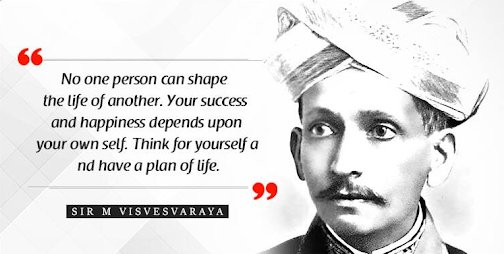
- Born in Karnataka in 1861, he studied Bachelor of Arts (BA) from the University of Mysore and then studied civil engineering from the College of Science in Pune and went on to become one of the most eminent engineers in the country.
- He was an engineering pioneer of India whose genius reflected in harnessing of water resources and building and consolidation of dams across the country.
- His work was becoming so popular that the Government of India sent him to Aden (Yemen) to study water supply and drainage systems in 1906-07.
- He designed a project based on his study which was implemented in Aden.
- He served as the Chief Engineer of Mysore State in 1909 and as the Diwan of the princely state of Mysore in 1912, a position he held for seven years.
- As the Diwan, he made an immense contribution towards the overall development of the state.
- He was knighted as a Knight Commander of the British Indian Empire by King George V for his contributions to the public good in 1915.
- He was an Engineer who had planned the Indian Economy in 1934.
- He was awarded an Honorary Membership of London Institution of Civil Engineers for an unbroken 50 years.
- He was conferred India's highest honour, the Bharat Ratna in 1955.
- He died in 1962 in Bengaluru, Karnataka.
- Books Written by him:
- 'Reconstructing India' and 'Planned Economy of India'.
- Major Contributions: During the course of his professional life, he has contributed a lot towards society by being part of several notable construction projects in Mysore, Hyderabad, Odisha and Maharashtra.
- He was the chief engineer responsible for the construction of the Krishna Raja Sagara Dam in Mysore.
- This work of his was instrumental in converting the barren lands into fertile grounds for farming.
- He was instrumental in designing and patenting a system of automatic weir floodgates in Khadakwasla reservoir in Pune in 1903.
- After the devastating floods (Musi River) in Hyderabad in 1908, he designed a drainage system to protect the city from these floods in the future.
- He is the one who designed a plan for road construction between Tirumala & Tirupati.
- He played a key role in developing a system to protect Visakhapatnam port from sea erosion.
- He also commissioned several new Railway lines in Mysore state.
- He had designed and carried out the waterworks for the Municipality of Sukkur in 1895.
- He is also credited with the development of the Block System which would prevent the wasteful flow of water in dams.
- He was responsible for founding the Mysore soap factory, the Mysore Iron & steel works (Bhadravathi), Sri Jayachamarajendra Polytechnic Institute, The Bangalore Agricultural University, and the State Bank of Mysore.
- He was the chief engineer responsible for the construction of the Krishna Raja Sagara Dam in Mysore.
Indian Heritage & Culture
Hindi Diwas
Why in News
Every year, 14th September is celebrated as Hindi Diwas in India.
- One of the reasons behind celebrating this day is to prevent the increasing trend of the English language in the nation and the neglect of Hindi.
Key Points
- History of the Hindi Diwas:
- Hindi, written in the Devanagari script, was adopted as the official language of the Republic of India on 14th September, 1949.
- Kaka Kalelkar, Maithili Sharan Gupta, Hazari Prasad Dwivedi, Seth Govindadas made important contributions to make Hindi the official language.
- The first Hindi Day was celebrated in 1953.
- Besides Hindi, English is the other official language (Article 343 of the Constitution).
- Hindi is also an eighth schedule language.
- Article 351 pertains to ‘Directive for development of the Hindi language’.
- Hindi is not a classical language.
- Hindi, written in the Devanagari script, was adopted as the official language of the Republic of India on 14th September, 1949.
- World Hindi Day:
- It is observed on 10th January.
- Commemorates the anniversary of the first World Hindi Conference held in Nagpur on 10th January, 1975, which saw 122 delegates from 30 countries participating in it.
- First celebrated in 2006 by former Indian Prime Minister Dr. Manmohan Singh with an aim to promote Hindi language across the world.
- The World Hindi Secretariat building was inaugurated in Mauritius in 2018.
- About the Hindi Language:
- Origin:
- Hindi got its name from the Persian word Hind, meaning 'land of the Indus River'. Turkish invaders in the early 11th century named the language of the region Hindi, 'language of the land of the Indus River'.
- The modern Devanagari script came into existence in the 11th century.
- Spoken in Countries outside India:
- Hindi is the fifth most spoken language among the total languages spoken in the world.
- It is spoken in Pakistan, Nepal, Bangladesh, USA, UK, Germany, New Zealand, United Arab Emirates, Uganda, Guyana, Suriname, Trinidad, Mauritius, and South Africa.
- Hindi is the fifth most spoken language among the total languages spoken in the world.
- Origin:
- Related Government Initiatives:
- The Central Hindi Directorate was established in 1960 under the Ministry of Education with an aim to impart knowledge of Hindi through correspondence to the people of non-Hindi speaking Indian states, Indians settled abroad and foreign nationals desirous of learning Hindi.
- Indian Council for Cultural Relations (ICCR) has established ‘Hindi Chairs’ in various foreign universities/institutions abroad.
- LILA-Rajbhasha (Learn Indian Languages through Artificial Intelligence) is a multimedia based intelligent self-tutoring application for learning Hindi.
- E-Saral Hindi Vakya Kosh and E-Mahashabdkosh Mobile App, both initiatives of the Department of Official Language, aim to harness information technology for the growth of Hindi.
- Rajbhasha Gaurav Puraskar and Rajbhasha Kirti Puraskar recognise contributions to Hindi.
Geography
Lithium
Why in News
Various provinces of Argentina are building mining logistics nodes and access roads, lowering tax rates and rationalizing rules for the sector to attract investment in the Lithium metal.
- Rising global lithium demand and surging prices have drawn increased interest in the so-called ‘lithium triangle’ that spans parts of Argentina, Bolivia and Chile.
- Lithium has become the new 'white gold' as the demand for high performing rechargeable batteries is rising.
Key Points
- Properties of Lithium:
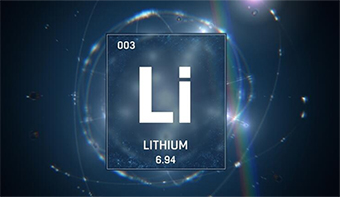
- It is a chemical element with the symbol Li.
- It is a soft, silvery-white metal.
- Under standard conditions, it is the lightest metal and the lightest solid element.
- It is highly reactive and flammable, and must be stored in mineral oil.
- It is an alkali metal and a rare metal.
- The alkali metals consist of the chemical elements lithium, sodium, potassium, rubidium, caesium, and francium. Together with hydrogen they constitute group 1, which lies in the s-block of the periodic table.
- Rare Metals (RM) include Niobium (Nb), Tantalum (Ta), Lithium (Li), Beryllium (Be), Cesium (Cs) etc. and Rare Earths (RE) include Lanthanum (La) to Lutetium (Lu) besides Scandium (Sc) and Yttrium (Y).
- These metals are strategic in nature with wide application in the nuclear and other high tech industries such as electronics, telecommunication, information technology, space, defense etc.
- Uses:
- Lithium metal is used to make useful alloys.
- For example, with lead to make ‘white metal’ bearings for motor engines, with aluminium to make aircraft parts, and with magnesium to make armour plates.
- In Thermonuclear reactions.
- To make electrochemical cells. Lithium is an important component in Electric Vehicles, Laptops etc.
- Lithium metal is used to make useful alloys.
- Countries with Largest Reserves:
- Chile> Australia> Argentina
- Lithium in India:
- Researchers at the Atomic Minerals Directorate (under India’s Atomic Energy Commission) have estimated lithium reserves of 14,100 tonnes in a small patch of land surveyed in Southern Karnataka’s Mandya district recently.
- Also to be India’s first ever Lithium deposit site found.
- Researchers at the Atomic Minerals Directorate (under India’s Atomic Energy Commission) have estimated lithium reserves of 14,100 tonnes in a small patch of land surveyed in Southern Karnataka’s Mandya district recently.
- Other Potential Sites in India:
- The major mica belts in Rajasthan, Bihar, and Andhra Pradesh.
- Pegmatite (igneous rocks) belts in Odisha and Chhattisgarh.
- Brines of Sambhar and Pachpadra in Rajasthan, and Rann of Kachchh in Gujarat.
- Related Government Initiative:
- India, through a newly state-owned company Khanij Bidesh India Ltd, had signed an agreement with an Argentinian firm to jointly prospect lithium in Argentina.
- Khanij Bidesh India Ltd has a specific mandate to acquire strategic mineral assets such as lithium and cobalt abroad.
- India, through a newly state-owned company Khanij Bidesh India Ltd, had signed an agreement with an Argentinian firm to jointly prospect lithium in Argentina.
- Lithium Production in Stars:
- Scientists from the Indian Institute of Astrophysics (IIA) have provided evidence for the first time that Lithium (Li) production is common among low mass Sun-like stars during their Helium (He) core burning phase.
Geography
Connect Karo 2021
Why in News
Recently, the Union Home Minister addressed the ‘Connect Karo 2021’ - Towards Equitable, Sustainable Indian Cities’ Event.
Key Points
- About:
- It is part of a global series of events that World Resources Institute (WRI) India organizes and hosts, to bring together Indian and global leaders, and other stakeholders committed towards designing inclusive, sustainable and climate forward Indian cities.
- WRI India is an independent charity, legally registered as the India Resources Trust.
- Connect Karo sees presenters from various fields — air pollution, electric mobility, urban planning, urban water resilience, climate mitigation, and public transit among others — sharing their insights and research findings.
- It is part of a global series of events that World Resources Institute (WRI) India organizes and hosts, to bring together Indian and global leaders, and other stakeholders committed towards designing inclusive, sustainable and climate forward Indian cities.
- Importance of Cities:
- Contribution to GDP:
- By 2030, almost 70% of the national Gross Domestic Product (GDP) will come from cities as rapid urbanisation facilitates efficiencies of agglomerations.
- The best-performing cities globally contribute five times more to national GDP than comparable Indian cities.
- Impact of Covid-19:
- By 2030, the urban population in India will almost double to 630 million and to facilitate this level of growth it is needed to upgrade the urban infrastructure considerably and the impact of Covid-19 on our cities has made this even more significant.
- Help in Fighting Climate Change:
- As the recent Intergovernmental Panel on Climate Change (IPCC) report suggests, cities are the major contributors as well as worst affected from climate change, hence, cities will be the battlegrounds for the fight against climate change.
- Even Sustainable Development Goals (SDG) 11 includes investment in public transport, creating green public spaces, and improving urban planning and management in participatory and inclusive ways.
- As the recent Intergovernmental Panel on Climate Change (IPCC) report suggests, cities are the major contributors as well as worst affected from climate change, hence, cities will be the battlegrounds for the fight against climate change.
- Contribution to GDP:
- Related Governments Initiatives:
- Pradhan Mantri Awas Yojana (PMAY): Launched in 2015, it intends to provide housing for all in urban areas by year 2022.
- Atal Mission for Rejuvenation and Urban Transformation (AMRUT Mission): Launched in 2015, it aims to provide basic civic amenities for all.
- Climate Smart Cities Assessment Framework: It is a step to adopt, implement, and disseminate the best practices adopted by our cities and further set standards in comparison to the international efforts towards the green, sustainable, and resilient urban habitats.
- Urban Transport scheme: Under the scheme, public bus transport services will be augmented by deploying public-private partnerships to finance over 20,000 buses.
- Jal Jeevan Mission (Urban): It will provide universal coverage of water supply to all households through functional taps in all statutory towns.
- Swachh Bharat Mission (Urban): It was launched on 2nd October 2014 which aims at making urban India free from open defecation and achieving 100% scientific management of municipal solid waste in the country.
Note
- UNESCO Creative Cities Network:
- It was created in 2004 and aims towards a common objective of placing creativity and cultural industries at the heart of their development plans at the local level and cooperating actively at the international level.
- The network covers seven creative fields: crafts and folk arts, media arts, film, design, gastronomy, literature and music.
- World Cities Culture Forum:
- It was established in London in 2012. It enables the policy makers of member cities to share research and intelligence, and explores the vital role of culture in their future prosperity.
- No Indian city is part of this forum.
Important Facts For Prelims
Index of Industrial Production
Why in News
India’s industrial output grew by 11.5% in July compared to a 10.5% contraction a year ago, as per quick estimates from the National Statistical Office (NSO).
Key Points
- About:
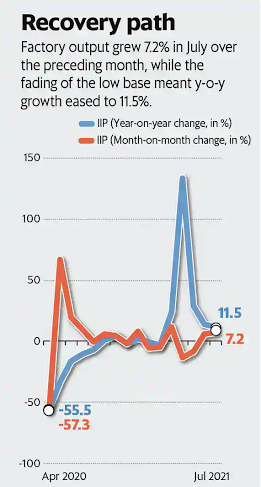
- Mining, manufacturing and electricity recorded growth of 19.5%, 10.5% and 11.1%, respectively, albeit driven by favourable base effect.
- The country's output of the eight core sectors - also known as the infrastructural output, grew 9.4% in July 2021.
- The index substantially bridged the gap with the pre-pandemic level and remained only marginally lower than the July 2019 mark, suggesting a graded pick-up in industrial activities with the easing of curbs in key states as the Second Covid Wave waned.
- This recovery is owing to the result of the Base Effect due to the Covid-19 lockdown that affected economic activity in 2020.
- The base effect refers to the effect that the choice of a basis of comparison or reference can have on the result of the comparison between data points.
- Index of Industrial Production:
- IIP is an indicator that measures the changes in the volume of production of industrial products during a given period.
- It is compiled and published monthly by the National Statistical Office (NSO), Ministry of Statistics and Programme Implementation.
- It is a composite indicator that measures the growth rate of industry groups classified under:
- Broad sectors, namely, Mining, Manufacturing, and Electricity.
- Use-based sectors, namely Basic Goods, Capital Goods, and Intermediate Goods.
- Base Year for IIP is 2011-2012.
- Significance of IIP:
- It is used by government agencies including the Ministry of Finance, the Reserve Bank of India, etc, for policy-making purposes.
- IIP remains extremely relevant for the calculation of the quarterly and advance GDP (Gross Domestic Product) estimates.
- About Eight Core Sectors:
- These comprise 40.27% of the weight of items included in the Index of Industrial Production (IIP).
- The eight core sector industries in decreasing order of their weightage: Refinery Products> Electricity> Steel> Coal> Crude Oil> Natural Gas> Cement> Fertilizers.
Important Facts For Prelims
Raja Mahendra Pratap Singh
Why in News
Recently, the Prime Minister laid the foundation stone of Raja Mahendra Pratap Singh (1886-1979) State University in Aligarh, Uttar Pradesh.
Key Points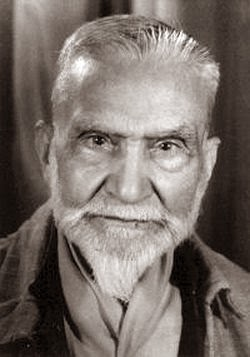
- Brief Profile: Born in Hathras (UP) in 1886, he was a freedom fighter, revolutionary, writer, social reformer, and internationalist.
- He was well versed in eight different languages and practised different religions.
- Promoted Education: In 1909, he gave up his own residence in Mathura to be converted into a technical school named Prem Mahavidyalaya.
- It is said to have been the country’s first polytechnic.
- Contribution to the Freedom Struggle:
- In 1913, he took part in Gandhi’s campaign in South Africa.
- He established a “Provisional Government of India (Bagh-e-Babur)” in Kabul in the middle of World War-I in 1915.
- He declared himself president, and his fiery fellow revolutionary Maulana Barkatullah of Bhopal, prime minister, of the Provisional Government.
- He is said to have met Vladimir Lenin in 1919, two years after the Bolshevik Revolution (in Russia).
- In 1925, he went on a mission to Tibet and met the Dalai Lama. He was primarily on an unofficial economic mission on behalf of Afghanistan, but he also wanted to expose the British brutalities in India.
- The Raja finally returned to India a year before Independence, and immediately began work with Mahatma Gandhi.
- Others:
- In 1929, he launched the World Federation (which later became the force behind the United Nations) in Berlin. He was nominated for the 1932 Nobel Peace Prize.
- In free India, he diligently pursued his ideal of panchayati raj.
- He entered Lok Sabha as an Independent candidate from Mathura in 1957.

